Seam Help! Cambria
When I was looking at stones for my kitchen 2 years ago, I did not like the seams I saw in the showroom of this particular fabricator and therefore did not use them.
Fast forward to NOW. Have a relative who ended up driving to this fabricator to purchase her Cambria Bellingham because no one closer had the slabs for her kitchen.
I suggested that they take a long hard look at the seams in the showroom. The seams they saw on the quartz counters seemed ok. The counter was just installed. This is how it turned out.
Can I get the opinions of experts here? Is this acceptable? Or if you have this quartz, are your seams this mismatched?
Thanks so much.
Comments (67)
jellytoast
10 years agolast modified: 9 years agoGreenDesigns, are you saying that I'm missing the point? How so? MY point was that customers could be spared a lot of this aggravation if the people selling and/or fabricating these slabs were more upfront about what could be expected BEFORE they cut the material and installed it in the customer's homes. They are the experts after all. I would be extremely disappointed to hear, after the fact, that they material I chose was going to look awful at any seams. If I knew about it ahead of time, I would likely choose a different material.
palimpsest
10 years agolast modified: 9 years agoIt says right on the Cambria website in red print at the bottom of the page where all the patterns are displayed... in red print... that pattern and shade vary from slab to slab and that visible seems are to be expected. I am not sure how much more explicit they can get. Of course you have to look at the website to see it
But it's one of the reasons I don't specify active patterns.
But I also don't see how anyone could look at those crazy random patterns and expect Not to see the seams.
Related Professionals
St. Louis Kitchen & Bathroom Designers · White House Kitchen & Bathroom Designers · Town 'n' Country Kitchen & Bathroom Designers · Eagle Mountain Kitchen & Bathroom Remodelers · East Tulare County Kitchen & Bathroom Remodelers · Alpine Kitchen & Bathroom Remodelers · Emeryville Kitchen & Bathroom Remodelers · League City Kitchen & Bathroom Remodelers · Omaha Kitchen & Bathroom Remodelers · Spokane Kitchen & Bathroom Remodelers · Bonita Cabinets & Cabinetry · Norfolk Cabinets & Cabinetry · Oakland Park Cabinets & Cabinetry · Tooele Cabinets & Cabinetry · Watauga Cabinets & Cabinetrya2gemini
10 years agolast modified: 9 years agoMy Cambria seams are tight. I have 2 seams - one by the cooktop - so very small and the other in the corner.
No one has ever mentioned - Oh, I see the seam.
The patterns do not totally match either.
Here is a cooktop area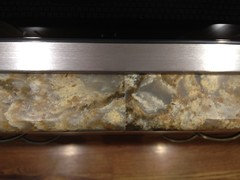
And our corner seam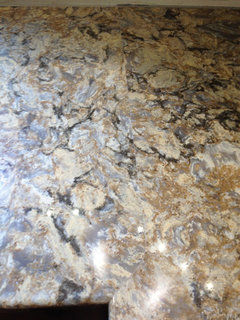
Same issues as Bee but again - with the coffee pot and grinder in the corner - no one has ever mentioned the seams - they are very smooth and less noticeable than the pictures.
Bee - have a great holiday!
Joseph Corlett, LLC
10 years agolast modified: 9 years agoOf the three seams pictured here, the last two are as good as seams get, granite or estone. Cambria has made clear in bright red lettering that seams like the first are to be expected. What else should they do, send a certified letter?
Unrealistic expectations on slabs with major movement is tiresome.
jellytoast
10 years agolast modified: 9 years agoSorry, I was unaware that people shopping for slabs went to the websites beforehand. Learn something new every day!
This post was edited by jellytoast on Sat, Dec 21, 13 at 20:16
Gracie
10 years agolast modified: 9 years agoLike oldryder said, a skilled fabricator will use software to lay out CAD drawings on the slabs and make as good of a match as possible, with the customer's involvement and final approval.
A bad fabricator will scratch his head and say, "Gee, didn't they see that bright red printing on the Cambria website? Ain't my fault!"
a2gemini
10 years agolast modified: 9 years agoTre
I am pleased with ours and recommend the installer to others. As pointed out, the swirls in Cambria are random making it hard to match perfectly.
I think the installer picked locations to limit visibility.
I was "lucky" or just trusting as I didn't pick out the slab or visit itpalimpsest
10 years agolast modified: 9 years agoUsually really active samples I order -- or tiles with lots of variation-- come with a sticker or something that indicates some limitations of the material. Sometimes more typical clients who aren't quite so kitchen obsessed don't want to get physical samples because you have to pay for them. I think it's money well-spent to have the actual material in hand, and sometimes would prefer to order two samples of highly variable material.
Joseph Corlett, LLC
10 years agolast modified: 9 years agomay flowers:
You and oldryder are correct that modern technology can allow customers to see seams before they are fabricated, however, that technology costs money and making a better match may result in a poorer yield, which costs money too.
beekeeperswife
Original Author10 years agolast modified: 9 years agoThanks again for more information. I have no idea what she was told when she was at the fabricator. This relative is the mother of my niece-in-law, so I really don't have any direct contact with her. I had offered to meet her at the fabricator when she was going (to act as her little bulldog in the showroom) but she was already there when I heard from my niece, so it was too late.
I've passed along all your comments to her. Thanks!
(Right back at you A2gemini!)
ineffablespace
10 years agolast modified: 9 years agoI wonder though, when it became so important for the material to appear as if it has been fabricated out of a gigantic slab which has no need for seems, and that changes in the pattern became "ugly".
I lived in a a couple buildings with marble fireplaces throughout and work in a building that used to be a government building where the entire first floor is sheathed in various marbles and there is no attention at all paid to hiding any seams and or joints and all the material just butts up against other pieces and it lands however it may and it is all still very pretty.
So when did "seamless" particularly if you weren't paying a premium or intentionally book matching or slip matching slabs--become so imperative?
I see a similar thing on the bathroom forum where people expect tile layouts that are exceedingly well done as a matter of course, without any discussion with the tile setter. I saw a thread where the poster said "An average/ standard layout like you see on Houzz" --that kind of craftsmanship that shows up in closeups on house is not standard work, it's well above standard in my experience, and it takes discussion and input from the homeowner, a craftsperson willing to do this and usually costs more, it's not something that is going to happen by itself if the average fabricator is left to their own devices.
Vertise
10 years agolast modified: 9 years agoI agree with Jellytoast and Mayflowers.
I don't think people have missed the point. A good, responsible fabricator would inform their customers and even demonstrate the problem. Where I come from clients need to be educated. It is simply part of the job. Necessary for a good final outcome, which benefits everyone involved.
Since a lot of these shops can't be depended upon, maybe there should be a product label on the samples stating their application limitations; when they are not made to be seamed in this case. As far as what else could they do other than the red print on their website -- including a photograph like the one above would go a long way to describe to laypeople exactly what they mean and how bad it can be. Also, including it on any product pamphlets and emphasizing to their fabricators to both communicate product information and understand when a product is not designed to be used when seaming is necessary.
beekeeperswife
Original Author10 years agolast modified: 9 years agoAnother thought....I know of a fabricator who will make the seam for granite (not sure of other stones) with a curved line vs the typical straight front to back seam, so you don't notice it as much. I wonder if something like that would work with a product like this.
I also agree that the fabricator should have a sample of this sort of thing in the showroom to explain very clearly to customers what they might expect. I don't think customers are going online to read the fine print. Even if they should be doing so.
Vertise
10 years agolast modified: 9 years agoYou should send Cambria a photo of what people are receiving, beekeeperswife. If they were to include it on their website, it would be readily available for sellers to easily show their clients without even needing to make a physical sample for the showroom.
ineffablespace
10 years agolast modified: 9 years agoThis would require the fabricator to have full sized samples of every active pattern of every solid surface material they work with. Cambria has 100 designs and at least 20 of these I can see would have a distinct problem with seaming, and at least half could potentially have visible seams.
Who is going to pay for the slabs for them to fabricate seams on themselves? Cambria? The fabricator themselves? I could foresee that the fabricator may Never sell some of the designs--most people aren't that adventurous.
When my parents did their first custom kitchen, (about 40 years ago) they saw a sample of the cabinet finish in the showroom and were given a 2"x3" sample of the countertop material. Nothing to test out, nothing to bring home.
When I did my first one (about 20 years ago) I was given a tiny sample of the countertop material, and was not given a sample at all of the granite I used in part of the kitchen, and I was allowed to borrow a 6 inch square finish sample for the cabinets temporarily. There was no information about appliances online, and I found the refrigerator I wanted, which was different than the one the kitchen designer spec'd by ordering an Actual appliance Catalog from One manufacturer at a cost of about $25.
Now the consumer has every bit of information they could want at their fingertips for every product they could possibly want to put in a kitchen. The obsessed consumer probably knows more than the average kitchen designer about what is available.
I agree, the fabricator should bring up the limitations of the material, but if I was the consumer looking at some of these materials, it should be pretty Obvious to someone of average intelligence that those wild patterns are going to have visible seams. I don't think it is up to the fabricator to demonstrate ahead of time how potentially noticeable some of the seams could be, to then have the consumer say "Well then I don't want this Cambria I special ordered". The manufacturer should have pictures of seams on their website. Dupont does, for a number of designs. But the consumer still has to be motivated enough to go to the website and look. I think in this culture many people would rather blow it off and then complain and blame everyone else after the fact rather than being a bit proactive.
With all the information that is available to the consumer I think it behooves the consumer to find out as much as they can when they are spending this much money and not make any assumptions.
I have limited my own projects to only very good and more expensive than average craftsman and I would Still never leave certain decisions in their hands.
No one has answered my other question though. When did it become that a noticeable seam, otherwise well-done, but visible became "ugly" or "unacceptable" even in a material where it would be nearly impossible to get a good seam without book matching or slip matching hand-selected slabs? When did people start expecting this as a matter of course rather than a custom detail, and at a sometimes budget price?
jellytoast
10 years agolast modified: 9 years ago"No one has answered my other question though. When did it become that a noticeable seam, otherwise well-done, but visible became "ugly" or "unacceptable" even in a material where it would be nearly impossible to get a good seam without book matching or slip matching hand-selected slabs? When did people start expecting this as a matter of course rather than a custom detail, and at a sometimes budget price?"
Just guessing here ... maybe it became unacceptable when everybody started posting pictures of their countertops online and people could see the difference between matched seams and unmatched. To me, matched seams just look better, but others may feel differently.
When I received a quote for fabrication, I just ASSUMED that my fabricator would give me the best looking seams possible, even though he never told me that such a thing would require premium pricing. To me, that is part of his job ... to give me the best looking job possible. I also just ASSUMED that the price I was quoted included quality craftsmanship. I think many people assume the same things. Honestly, I have never ever received a quote for a job that included a stipulation that having a quality outcome would result in an increased price.
I do think that people may select their material based on what they can afford, but they expect the fabricator to do the best job possible with that material. Just because someone can't afford the most expensive granite in the stone yard doesn't mean that they want to cut corners on the installation.
" ... it should be pretty Obvious to someone of average intelligence that those wild patterns are going to have visible seams."
Cambria doesn't really look that wild to me.
sjhockeyfan325
10 years agolast modified: 9 years agobut they expect the fabricator to do the best job possible with that material.
which is exactly what the fabricators on here are saying this particular fabricator did in this instance LOL
Vertise
10 years agolast modified: 9 years agoYou're dealing with people who are out of their element. It has nothing to do with their ... lack of Intelligence .. as you like to think. Hindsight is 20/20, as is being in the field. People really shouldn't have to know anything about fabricating a counter, installing tile or flooring, Code requirements, material specifications and procedures. .... That is what a professional is hired -- and paid well -- for. A lot of fields we deal with, the professionals handle things, not the other way around. Many people would not even suspect they needed to know anything other than placing an order for what they want.
As far as customers being unmotivated -- no, it's the professional who needs to be more motivated and interested in what they do other than just making money. To understand their own field and materials and how they need to interface with their customers in order to produce a quality installation for them -- it's not like we don't pay through the nose for it. If they don't understand the technical aspects and/or limitations of a product, they shouldn't be selling it. Of course it all needs to be handled prior to the fabrication stage.
Stop blaming customers for everything. The professional already knows what to be proactive about, they deal with it all the time. The customer doesn't. That is why people hire professionals. Things shouldn't be kept secret, put upon the customer as some discovery phase they should have known to do.
As many people know, some customers do do research, think they've got it all covered, only to find there are still problems because they didn't know what they didn't know -- and unfortunately couldn't rely on the pro to do what they were supposed to do or to deliver a quality job.
Who is supposed to be an expert in their field? The customer? I don't think so. Really, this is what separates the men from the boys. There are conscientious people and good craftsmen and then there are people who just do stuff. Often because they are simply lazy.
On mismatched seams in old buildings. Old buildings have a quirky charm where things like that don't stand out for one thing. Although I doubt they are all that way, depending. But times have changed. That's progress.
jellytoast
10 years agolast modified: 9 years ago" " ... but they expect the fabricator to do the best job possible with that material."
" ... which is exactly what the fabricators on here are saying this particular fabricator did in this instance LOL ... " "
sjhockeyfan, to clarify ... my comment was addressing ineffablespace's question, and was not referring to this particular Cambria installation."
Vertise
10 years agolast modified: 9 years agoThe best job possible with that material is to understand that it is not designed to be used with seams.
And other than a good seamstress, most lay people are not going to be thinking about patterns and seam matching.
This post was edited by snookums2 on Mon, Dec 23, 13 at 18:35
ineffablespace
10 years agolast modified: 9 years agoA really good job is always going to cost more than an average job. Unfortunately sometimes a bad job is just as expensive as a good one. I am not blaming the consumer for that But it is more likely that if you take the lowest bid on everything that the quality will be comparable.
I am not saying that the consumer has to Know how to lay tile or seam a countertop, but on the other hand I think they need to Indicate what they want and what they expect.
On one of the complaints of a tile job, the problem went back to the framing, it was not the tile setter's fault. If the consumer wanted a pony wall to be covered on the edge with exactly two widths of tile, no cuts, and a bullnose along each side, which is what it sounded like they Expected, this had to be discussed with the carpenter first "You know, I would like this to be covered by two tiles and not have any slivers" and then it has to be discussed with the tile setter "You know we framed this so it could be covered with two tiles width. without slivers, can you do it this way or is there going to be a problem".
The tile job in that case looked bad, I thought, but it was tiled "correctly" given the tiles that had been ordered (not the right sort of bullnose) and with a sliver up the middle which was necessary to fill the space. Maybe most people wouldn't care about this, just thinking this is how it had to be. I doubt it was the first time the tilesetter had ever done it this way.
So, no, the consumer doesn't have to know how to do a seam or lay a tile better than the fabricator, but they do need to Discuss their expectations, Ahead of time rather than everybody assuming that everybody is on the same page.
As a consumer I assume that the trades have absolutely no idea what I really want.
I am doing a bathroom right now and when I went and looked at it , the tilesetter, who is excellent, said: "Things were a bit out of square and as carefully as we measured and planned I have to cut this entire row of tile at the bottom" I looked at it and said "If you cut this One tile right here, where there is just a single vertical row of tile, you can move all the other tiles down a little bit and all the rest will be full tiles. Then the only other cut will be over behind the door. Two cut tiles versus about 40" And he agreed. As to why he didn't think of it--it's because he was in the midst of the process and I was looking at it with a fresh eye. Not that I am better at actually doing it than he is, not that I am telling him his job.
As for the Cambria patterns. sure, 80 of them will probably not cause a problem with seaming, but there are 20 that probably would, and those are the minority that needs to be discussed as in the consumer Asking "Hey is this seam going to be pretty visible? Can I come see the template?" If they aren't responsive to this maybe you use someone else.
Vertise
10 years agolast modified: 9 years ago"As a consumer I assume that the trades have absolutely no idea what I really want. "
Yeah, and they don't care either. Bam boom they want to get the job done, any how any way, and move on to the next job. Don't dismiss that .. many .. of them, do not want to hear about your specs or what you want, especially when it comes to details. It's all their job as they see it. I imagine this is why so many do not like to work with designers. They have to answer to someone and the bar for quality and industry/Code requirements is raised. They don't like permits either. Along with the fact that so many of them have no business messing with people's houses as they do not have adequate technical knowledge. They just do stuff. -- I know this from my research on projects! Ignorance was bliss.
:" and those are the minority that needs to be discussed as in the consumer Asking "Hey is this seam going to be pretty visible? Can I come see the template?"
No, the salesman needs to bring this up. The customer is likely unaware. Unless they are a good seamstress and on the ball when thinking about the countertop patterns. I do not understand why you let the professionals off the hook.
This post was edited by snookums2 on Mon, Dec 23, 13 at 19:51
beekeeperswife
Original Author10 years agolast modified: 9 years agoThe "remnants" that the fabricator has on hand might be able to be made into a couple of samples. Highly unlikely that anyone would ever have samples of every stone to show. But if this is something that a customer must be made aware of, I think having a customer see it in person will maybe make them realize that a busy pattern will indeed result in a visible seam. The fabricator could also have photos of his work with the different stones, and tell the customer, this is what the seam will look like with your chosen material.
Vertise
10 years agolast modified: 9 years agoToo, the manufacturer knows whether they've designed something that lends itself to matching or not. They should be labeling the product's application limitations at the source. And could also provide images of seam expectations for any products that fall short of a "seamless" match. As for natural stone, it's still the professional's responsibility to advise the customer how a particular stone translates to a counter top, in advance, imo.
ineffablespace
10 years agolast modified: 9 years agoI think it really diminishes the trades though to assume that because you don't get what you want or the quality you expect --that it's because they just don't care. Sometimes you don't get what you want because you don't tell someone what you want. There is more than one way to do many things correctly, but you may want correct option B when you get correct option A. You shouldn't expect someone to read your mind.
I don't think that most people are content to knowingly do a lousy job, some people are just not capable enough to do a really good job, and that's not their fault. It doesn't mean that you have to accept that level of quality, but I don't think they are doing it on purpose, they are just doing what they are capable of doing.
I agree, though, there are people who just want to get it done and move on. And there are plenty of consumers that just want to get it done and move on, too. And here's hoping they find each other.
If this were back in the day when the consumer didn't have virtually the identical access to the same information that the professionals have, I would place All of the responsibility on the salesperson, the designer (and the experienced tradesperson) rather than including the consumer.
However, the consumer who is online comparing results they see in Houzz with the results they are getting are internet savvy enough that they should do more than just look at the pictures on manufacturers website and Take Note of the Red Print on the same page talking about seams.
I am not letting Anyone off the hook when it comes to the process in this day and age. The consumer who expects the raised bar needs to take their own part-interest in holding the bar Along With the salesperson, manufacturer, designer and fabricator. We no longer live in the age where all the professional information was only in the hands of the professions, to be doled out to the consumer as they saw fit, and the consumer would have to take their word for it that a bad seam or a good seam with a bad match was the only way it could be done.
cabman
10 years agolast modified: 9 years agoWhen I am spending 3K-5K on a project, I do some research before contracting to spend my money. I just spent 20 minutes reading this thread. Everything you could possibly need to know or address about seams and different types of stone counter tops are mentioned here. Why do so many people think, as a customer the majority of the fault about missing information, falls to the fabricator? While he may work with this stuff everyday, he can not know what may or may not bother someone. It is his duty to give basic information and try to avoid the most typical problems. I wonder if the OP would have been willing to pay a big up charge to get a better matching seam? This would most likely result in a large amount of waste in cutting. My bet is most people would find the seam acceptable rather then paying a large sum of money for a slightly better result.
palimpsest
10 years agolast modified: 9 years agoI think the other part of this whole equation is that, because of Houzz, and because of some of the work seen on GW, that the bar of expectations is raised for many consumers but the bar of their budget has not been raised to that same level.
Someone, livewireoak, I think, often quotes the typical price points of a kitchen renovations and bath renovations (Something like $50K for kitchen, $25K for baths).
Honestly have have had clients just about ____ their pants when you talk about numbers like this. They think a kitchen is $10K. And a kitchen is certainly doable for $10K, but it won't be a $50K kitchen (or a $300K kitchen like someone I know did). But if all you are referencing is the $50K kitchen, you are going to be disappointed in your $10K kitchen.
And for some people, the idea of condensing your thoughts into 1/5th the budget is at least as hard as trying to visualize a seam in an obviously active pattern.
I once made the mistake of going on a field trip with two clients who were friends that had vastly different budgets. The one with the lower budget was running around the store saying "You didn't show me This! Why didn't you show me this!" I didn't show it to him, because it was a lamp that cost twice as much as he was willing to spend on a sofa.
He also pointed out a run of cabinetry in my kitchen that ran about $1000 a foot because it was a minimalist run of slip-matched veneer, and said "I want that". Of course he did, he just couldn't pay for it. And I could, only barely and that's why it was one small feature and the rest was simple painted cabinets.
I've done and friends have done perfectly nice $6000 bathrooms and $15,000 kitchens for people but you are either going to pay for modest materials and more for workmanship or more for materials and have to expect less for workmanship. You can't have it all on a budget. I would pick modest materials any day, but people feel the pressure to have quartz or something other than entry-level granite, so something's got to give.
jellytoast
10 years agolast modified: 9 years ago"If this were back in the day when the consumer didn't have virtually the identical access to the same information that the professionals have, I would place All of the responsibility on the salesperson, the designer (and the experienced tradesperson) rather than including the consumer."
The difference is that when I hire someone to do a job for me, I shouldn't have to know everything they know, and I shouldn't have to spend hours on the internet trying to learn everything they know. That's why I'm paying them for their expertise, so that I don't have to know everything about their job. Of course, that is in an ideal world ...
palimpsest
10 years agolast modified: 9 years agoAnd if you find someone who can provide you with turnkey service and you trust every decision they make in your stead, awesome. There are such people who can provide such service. I don't think you are going to get this by chance from someone through Home Depot or the Yellow Pages.
But even patients who get surgery now tend do to a little research online (which can be good and bad) so that they can ask Informed questions and have an Informed opinion about what is going to happen. They aren't educating themselves so much that they could do it instead of Me.
My point is, that if you leave the entire process in the hands of the craftsperson or fabricator, you may have some surprises or results that you are not happy with. These results may be perfectly "acceptable" results, just not to you.
GreenDesigns
10 years agolast modified: 9 years agoMost of this conversation has little to do with the pictured seam, which is a perfectly acceptable result for the material being used.
It's about the philosophy of demanding your version of perfection after the fact, and "not settling" when neither the materials nor the budget support that expectation. There's a gap in reality between acceptable average results (not just in stone) and the desired perfection that many seem to have here.
That gap is bridged by dollars. It's not realistic for the most part. You don't get a 16 oz. top shelf T bone buying lunch at the Western Sizzlin buffet. Nor do you expect to.
How many posts are there looking for the "cheapest" fabricator. The "cheapest" cabinets. The "cheapest" worker who won't pull a permit for rewiring your house. That search won't ever jive with the demand for perfection.
It simply can not be had both ways.
"A" level results cannot be expected from the search for the cheapest. Having incorrect expectations for a result doesn't give anyone the bully pulpit to declare that all tradesmen are cheats and hacks. The burden for the customer's expectations for any project rests on the consumer's shoulders, not the tradesman. The tradesmen is only responsible for doing the job in a workmanlike acceptable manner. If you expect something different, it has to be communicated at the time you are seeking someone to do the job, so they can tell you they can't do what you want at the budget you have to do the job with.
I'm with Trebuchet. Harrangues about professionals all being cheats and liars is becoming tiresome. It's what keeps more pros from participating on this board. I'm tired of being the whipping boy for you to despise. If someone has never experienced a good relationship with a pro, that says volumes more about the customer than it does the professionals.
I've had enough. Time to go elsewhere.
jellytoast
10 years agolast modified: 9 years agoGreenDesigns, I agree with you that many of the threads here on GW seem to be divided between consumers and the trades and the opinions are often at odds. I would hope that these discussions would serve to help everyone get on the same page which would be beneficial to everyone. If there's one thing I've learned here, it is that our expectations of each other often fall short.
Going back to beekeeper'swife's original post, she did ask for the "expert's opinions" so perhaps everyone who is not an actual fabricator had no business in posting a reply. I'm very sorry that you feel that you were personally attacked, though I don't think anyone meant it that way.
Vertise
10 years agolast modified: 9 years agoI think there are also a lot of assumptions made about people or what they have spent or who they have hired.
I don't think improperly installing a floor, counter, tile etc. is a situation of either expecting perfection or a correct Option B. There are industry standards in place for a reason, Code, manufacturer specs, that need to be followed to avoid failures, sloppy workmanship and maintain warranties. It's not any company's decision to perform substandard work to save time or money. It's the customer's house, money and decision to be made.
The counter above, and others who have similar quality problems, is a high end product. I think a high end result and high end professional service (ie, being informed about seams) can be reasonably expected from the consumer and is not asking too much. The excuse here is always that people cheaped out. They need to spend more.
I would not have purchased that counter if I knew in advance what the seams would look like. Cheap. Like an inexpensive, poorly matched garment or one sewn by an inexperienced seamstress. I might have purchased another slab if that would solve the problem.
It's a lot of money. The customer is the one who should be making the decision how much they want to spend not some company who thinks they would not be willing to buy or pay if they knew.
Do you have any idea how much they spent on this counter Beekeeperswife? That their expectations are too high?
I would write to Cambria and see what they say about how their materials are being fabricated.
Vertise
10 years agolast modified: 9 years agoOh, and I would consider details like that to be design. Good design. And a fundamental step in the process, SOP. So to hear all the designers state they don't even address such a thing, that the customer should have noticed that themselves or be doing their research, is a bit surprising.
nosoccermom
10 years agolast modified: 9 years ago"Cambria is not a seamless product, seams are visible. Where there are seams the product pattern and shade can change."
Of course; however, there are pattern/shade changes and then there are PATTERN AND SHADE changes. As a consumer, who doesn't purchase Cambria on a regular basis, I would expect a fabricator and/or dealer to raise this issue. If the customers insist on going ahead nevertheless, yes, then they are at fault. But at least a customer should be given the option of deciding what they'd be willing to pay in addition to have a better match.
There are ten pictures of the Bellingham on the Cambria site, and all together 320 photos of Cambria counters. Perhaps one could expect ONE photo of what pattern or shade change would be considered acceptable.Another quote from Cambria:
" Is Cambria seamless?Cambria is a natural stone product that does require seams for any application longer than 119" or wider than 54". These seams are generally visible, but often less noticeable than a typical granite seam."
In that case, perhaps, followed by Greendesign's explanations above?
ineffablespace
10 years agolast modified: 9 years agoBut designers don't design like they used to. When my parents used an interior designer, they told the designer what they liked and she presented them ONE SCHEME for each room.
If they didn't like a particular element, she found A REPLACEMENT for that element, or if they didn't like the scheme she presented them with a SECOND SCHEME.
My mother may have seen all of TWO countertop examples for the kitchen. She didn't HAVE ACCESS to ONE_HUNDRED from ONE manufacturer.
As a designer, I would never SPECIFY a lot of those patterns especially if they needed I seam, and I think a lot of designers would be of the same mind. And, if you are like Jellytoast and pay the designer to do the design and leave a certain number of initial decisions to the designer, You as a Client may not even be Exposed to these options that are more difficult to work with.
However, I have had clients that want to see every available option of everything and basically use me for some sort of validation and for my Access to Materials. And, sometimes they pick out stuff that I would Never show them because I think it would be problematic and sometimes they Insist on Having it. So, they are bypassing my supposed expertise.
And some of them get Annoyed if I try to talk them out of something.So the client can't have it both ways. They can't both rely on the Expertise of the designer Sometimes and Override it at others. I've gotten to the point where I have actually asked people to Sign something that said I Told them doing something would be a Mistake, in my opinion and that they Chose to Do So against my advice. I don't think anyone has ever signed it, I think they changed their minds about wanting whatever it was.
As a CLIENT on the other hand, I am willing to research my selections and form an opinion about them and Also listen to the expert. Again, not that I could DO it better than they could, but so I can ask educated questions.
As for budget playing into things, and sometimes the client not being willing to pay enough, it happens even when expensive materials are being used. I did a relatively inexpensive kitchen where the big ticket item was the quartz countertops. The client did not go with the fabricator I would have used, she went with a cheaper fabricator. It's a plain material and still have a visible seam. I would be very unhappy if it were my kitchen with that seam, but I would have used a different fabricator. I have been involved in some very expensive projects where people want to get everything on the cheap because the project is so large.
I would rather live in a smaller house, with modest materials and very good workmanship and very few people can be talked into this. I have had people ask about the carpenters I use, the electrician I use, the plasterer I use. the painters I use, after seeing their work in my own house. The Majority of the time, they do not use my recommendations because they are "Too Expensive", but then they are disappointed to not get the quality they have seen.
jellytoast
10 years agolast modified: 9 years agoineffablespace, it sounds like you do everything you can to inform your clients regarding their choices and I'll bet they appreciate it very much. I honestly think that communication is key to an acceptable outcome for everyone and the more knowledge that can be shared beforehand, the better.
Bunny
10 years agolast modified: 9 years agoI hope GreenDesigns doesn't go away. I've learned a lot from her.
ineffablespace
10 years agolast modified: 9 years agoActually people think I am a PITA, because I am. But I don't want to be associated with something that doesn't turn out well.
jellytoast
10 years agolast modified: 9 years ago"I hope GreenDesigns doesn't go away. I've learned a lot from her."
I agree, and I hope she (he?) reconsiders. But I don't think the other opinions on this thread are wrong simply because they didn't agree with GD. And I don't see any evidence of anyone treating GD as a "whipping boy to be despised." If I've missed something somewhere, please set me straight.
GreenDesigns, you said, “Most of this conversation has little to do with the pictured seam, which is a perfectly acceptable result for the material being used, [but is rather] about the philosophy of demanding your version of perfection after the fact, and "not settling" when neither the materials nor the budget support that expectation.”
I don’t see it that way at all. I think many of the posts here are stressing that a lot of problems could be solved by better communication before the materials are chosen or cut, and are not about after-the-fact complaining and fault-finding. If a fabricator is familiar with a material, or familiar with information on a supplier’s website, what is lost by sharing that information with the consumer? And what is gained by withholding it?
We all have a right to our views and opinions, and telling us that we are missing the point when we are trying to make a point or take part in the conversation feels somewhat condescending. There are other remarks on this thread that we customers could be offended by as well. The comment, “It should be pretty obvious to anyone of average intelligence …” implies that those of us who didn’t see it as obvious are of less-than-adequate intelligence. And the comment, “What else should they do, send a certified letter?” is just snarky. So it goes both ways, really. Do you think it’s possible that you are taking things too personally?
As consumers, we are stating OUR OPINIONS about how we want to be treated by the people we hire to perform services for us. As a tradesperson, you can certainly choose whether or not to consider those opinions when it comes to how you do your business.
Just the fact that beekeeperswife posted this photo indicates that the customer didn’t know if that Cambria seam was acceptable and likely didn’t read the small print on the website ahead of time. A little discussion about it beforehand could have easily prevented the installation “surprise.”
ineffablespace
10 years agolast modified: 9 years agoRe: the obvious to someone of average intelligence remark:
I think that if you compare a tweed fabric that looks almost like a solid at a distance (a small particulate pattern) and a large scale plaid fabric (Bellingham, Buckingham, Hollinsbrook,etc.) --the average person who looks at that understands that a plainer fabric is easier to "match" than a large plaid----particularly understood by those who are bothered by the seam when completed.
I don't think that's condescending at all, I think it is crediting that the average person understands basic visual scale.
ineffablespace
10 years agolast modified: 9 years agoAlso I don't think that it's really about Not "seeing" the scale of the material. I think it is about varying expectations of what you expect a fabricator to DO about it and varying degrees of how much it Bothers you as an individual to have obvious pattern mismatch, regardless of the fact whether better is possible or not.
User
10 years agolast modified: 9 years agoIf you want an invisible seam, then you have incorrect expectations about what is actually possible in many materials. This thread is full of unrealistic expectations in fact. Only in Corian with not a lot of movement does that "invisibility" even approach possible, and even they will tell you that the seams are only "inconspicuous", not invisible. In natural stone, to get a "perfect" seam requires extra material, which equates to extra expense. In a man made material with movement, because it doesn't have a natural predictable pattern to that movement like natural stone does, getting an invisible seam is never going to happen.
The seam pictures is acceptable and to be expected in the material chosen.
jellytoast
10 years agolast modified: 9 years agoPoint taken. If I am constructing a garment using a large plaid, I make sure to buy enough extra fabric to allow for matching the pattern, and I make sure that I select a pattern that lends itself to large plaids. If I don't, I don't care how great my sewing skills are, it isn't going to look quite right. Frankly, I hate mismatched plaids, but I see plenty of people out and about sporting them, so obviously not everyone cares. If I were sewing a garment for someone, though, I would assume that they did.
This post was edited by jellytoast on Tue, Dec 24, 13 at 20:34
Vertise
10 years agolast modified: 9 years agoI don't think people are expecting perfection, invisible seams or miracles to be done. That's an invalid argument, imo.
The condescending statements and inferences to intelligence are uncalled for, serving only to spark counter attacks rather than discussion. Typical from certain posters but the average person knows it's unnecessary. Oldryder has started another thread that proves that point. Professional in his job and workmanship, professional in his communications. Do you ever see anyone taking issue with his posts? I don't think so. And he gets it. I don't think he has anything to be defensive or accusatory about because his customers don't need to complain. He has achieved and demonstrates professionalism. He takes responsibility for the job he has chosen, and chooses to master all dimensions of it. If something should happen to go wrong, he handles it. I call that a professional. One that can command high wages that many others also do but haven't earned yet. (And that doesn't mean I think a professional is someone that should know or absorb everything, on my account; as I think a lot of these arguments come down to money. Who pays for the mistakes).
This post was edited by snookums2 on Tue, Dec 24, 13 at 21:10
Joseph Corlett, LLC
10 years agolast modified: 9 years ago"And the comment, “What else should they do, send a certified letter?” is just snarky."
jellytoast:
Your assessment of my comment is fair and it probably is snarky.
I hope that more than communicating snark, I am communicating my frustration with those that were fairly warned yet wanted to second-guess an outcome anyway.
I struggle with my written tone and will rededicate my efforts in the new year. Bear with me, please.
beekeeperswife
Original Author10 years agolast modified: 9 years agoI do not know how much the person paid for the counters in the first picture. From my experience the shop is not cheap, in fact it was another reason I did not use them for my Superwhite counters, they suddenly needed another $1000 when the new shipment arrived (because it was at what I would call the height of the SW craze) and they had not reserved my slabs with the original pricing.
Thanks oldryder for the new thread you started. I really did not post this to get everyone's knickers in a bunch. I truly wanted to know if having 2 pieces of cambria that are so dissimilar to each in pattern, butted up against each other, is acceptable, industry-wide. I have never used this busy pattern. I have never had a client use this busy pattern. I appreciate all the feedback.
palimpsest
10 years agolast modified: 9 years agoSnarkums,
I love how you feel comfortable calling other people's comments "uncalled for" or "condescending" and yet you make remarks like this:
"Yeah, and they don't care either. Bam boom they want to get the job done, any how any way, and move on to the next job."
Painting most of the trades with a broad, negative brush. If they didn't care that much they would no longer be in business.
Your perpetual lack of insight into your own condescension and negativity is why I Try to ignore most of the things you say.
Gracie
10 years agolast modified: 9 years agoObviously some of the professionals here tend to side with the industry and some of the posters tend to side with the consumer. Most of the commenters on this thread would probably never work together, so why get personal?
Now that we know how half of the kitchen forum feels about those mismatched slabs, I'd love to know what Cambria thinks!
jellytoast
10 years agolast modified: 9 years agoYes, Trebrucet, I did get what you were trying to convey and I did not take offense at your comment. I didn't have a problem personally with any of the comments I singled out, I was just trying to convey the idea that in the midst of ideas and opinions being tossed about, maybe we shouldn't take things personally. Of course, if comments are directed at an individual, it's kind of hard not to take them personally.
My husband and I are in the trades, but I frequent GW as consumer, so my posts are colored on the consumer side of things. Reading snookums comment that palimpest referred to, I didn't see it as meaning to include everyone in every trade. But there are a lot of hacks out there and that can't be denied. The construction trade has gotten a bad rap, and we deal with the repercussions of that all the time. Sometimes we go to bid a job and the customer hates us as soon as we walk in the door. They have either had a bad experience, know someone who had a bad experience, or have heard enough horror stories to fear that they are GOING to have a bad experience. We don't take their fears and opinions personally and I just see that as a part of doing business in the construction trade.



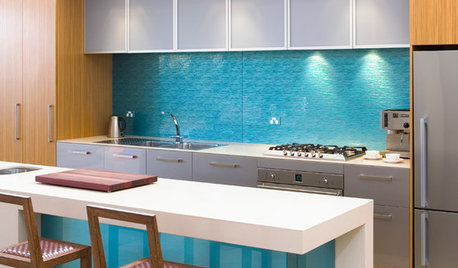
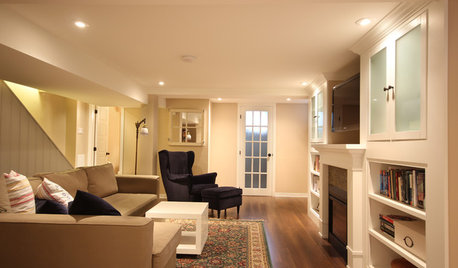

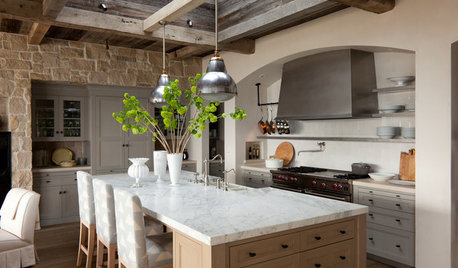












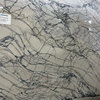
Granite City Services